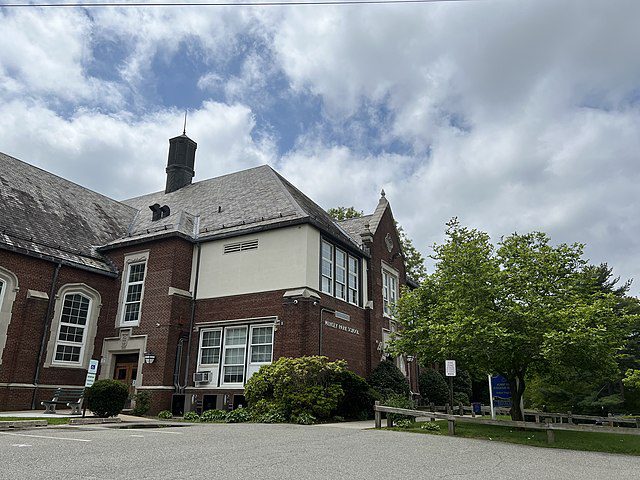
The Manhasset Board of Education adopted its $111 million budget Tuesday which includes more than a dozen staff cuts to bridge a $1 million gap.
“We’ve discussed that this budget has been very challenging to formulate amid immense pressure created by increased costs in employee healthcare with back-to-back enormous increases in health insurance premiums, pension costs and a significant increase in the cost of out-of-district special education placements,” Superintendent Gaurav Passi said.
The district adopted a $111,286,207 budget for the 2024-2025 school year, which is an increase of $3,553,203, or 3.3%, from the current budget.
The district’s tax increase is set at 2.68%, which falls within its allowable tax cap.
To comply with the tax cap, Passi said the district had to make more than $1 million in budget cuts.
To do so, the district removed 14.45 full-time equivalent positions, which has sparked pushback from students, teachers and teaching assistants arguing for the necessity of these positions.
“Given the universal stressors on school district finances for ’24-’25, Manhasset is not unique in its need to reorganize and reduce certain staff positions to achieve a balanced budget that accomplishes our primary goals,” Passi said.
The district proposed that 4.1 teachers be removed, with decisions based on student enrollment in certain subject areas.
Proposed efficiencies in staffing include 3.5 teachers on special assignments returning to classrooms.
Teacher assistants will also be reduced based on the proposal.
Elementary co-teaching assistants will be reduced to 14 full-time employees, with the current budget allowing for 24.
Elementary computer lab and library teaching assistants will be removed entirely, with two full-time positions currently existing for both. The one full-time position for the secondary library teaching assistant will also be cut.
Secondary school departmental teaching assistants will be reduced from five full-time employees to four.
While more than 14 positions will be removed, three elementary school teachers and 2.5 full-time equivalent secondary teachers will be added to aid in smaller class sizes.
A majority of the positions being cut are teaching assistants, which Board President Steven Panzik recognized as a difficult decision to remove due to their contributions to the district.
“To them that are out there we’re sorry we couldn’t make it work,” Panzik said, addressing the teaching assistants and the district’s failed efforts to keep them employed. “We’re really sorry. We tried.”
One of the district’s main financial stressors was employee compensation and benefits increases.
Compensation and benefits encompass 75% of the district’s budget expenses. Broken down, compensation constitutes 50% of the budget while benefits are the other 25%.
Benefits in total are increasing by 36% from the prior year, amounting to 1.18% of the district’s budget increase. Compensation in total is increasing by 20%, or 0.66% of the budget increase.
In conjunction with these rising costs are also “fewer than usual” staff retirements, Passi said, which would typically aid in mitigating the financial impacts of contractual increases and compensation.
Since the last budget hearing, the budget has been modified in response to developments.
Also adding to the district’s financial strains was its unprecedented drop in state foundation aid funding by about $629,000, or 20.7%.
On Monday, the governor announced she had reached an agreement with the state Legislature to reinstitute the foundation aid hold harmless policy, which would ensure all school districts get the same amount or more foundation aid from year to year.
“That is good news,” Passi said. “However, it’s still not clear what this means for Manhasset’s foundation aid as no new school aid runs have been produced.”
The district’s budget is based on the assumption that the foundation aid will be restored in its entirety. If that does not happen, then the budget gap will be funded through the district’s FEMA recovery funds.
Another change was the cost reduction for a single out-of-district placed student, bringing the total number of students placed out of the district to 35.
The district was also planning to implement an incremental administrator to support the secondary school principal based on student needs, but Passi said it was not previously possible to include funding for that position in the budget.
That funding now is available due to the cost reduction associated with the out-of-district student, which Passi recommended be added to the budget.
Passi said there has been turnover for the secondary school’s assistant principal position, with multiple past assistant principals citing an overwhelming workload that impacts their ability to meet the needs of students in their exit interviews.
The incremental administrator will now aid in the assistant principal’s workload.
Despite the district’s financial challenges, Passi applauded the district for creating a budget that still achieved its goals.
School district goals include lowering class sizes, expanding academic course offerings, upgrading facilities and technology, increasing security staffing and supporting student wellness.
“There is much to be proud of in the 24’-25’ budget,” Passi said. “The proposed budget is laser-focused on our commitment to our priority areas and goals.”
The district will hold a budget hearing on May 9 before it faces a community vote on May 21.






